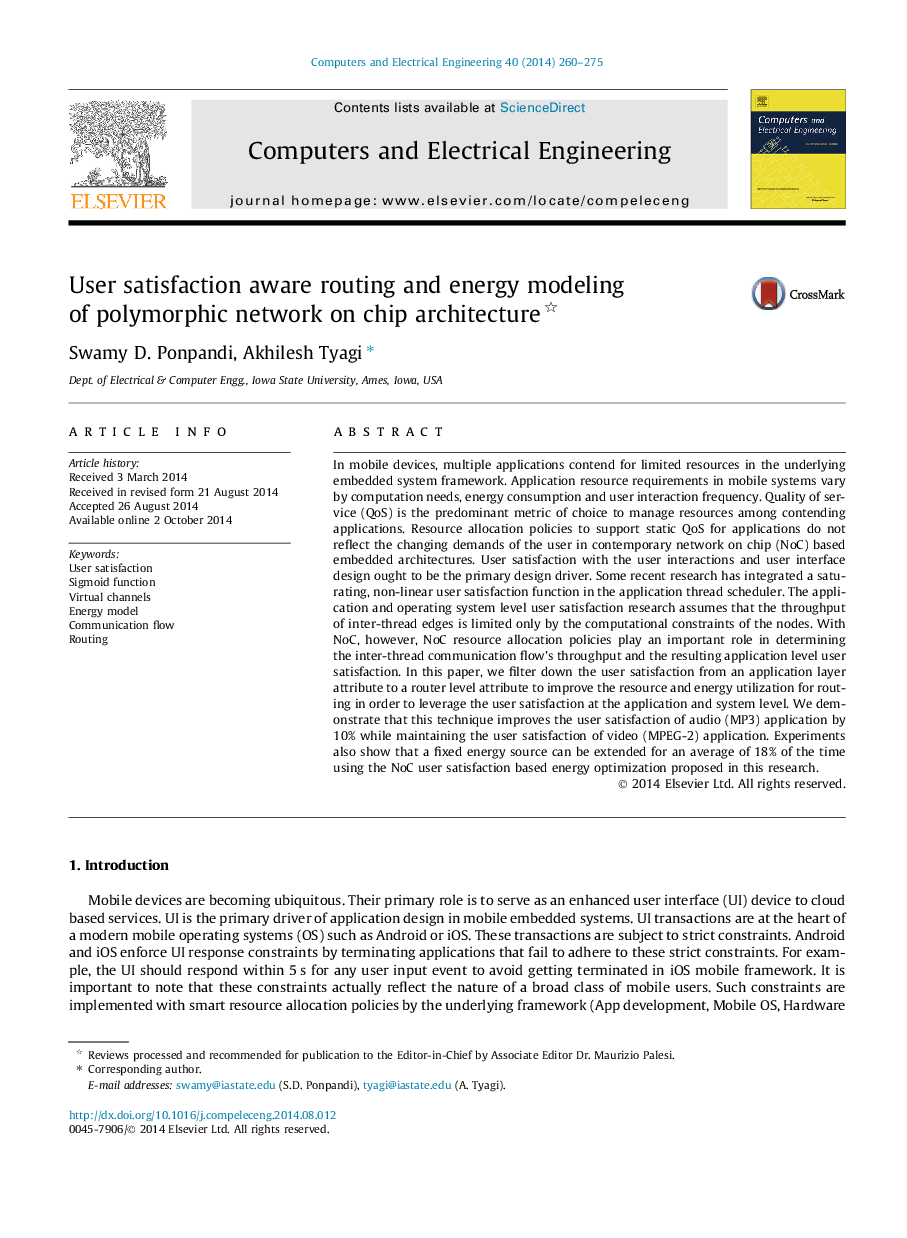| Article ID | Journal | Published Year | Pages | File Type |
|---|---|---|---|---|
| 455355 | Computers & Electrical Engineering | 2014 | 16 Pages |
•We develop User satisfaction model for VC allocation in NoC routers.•Energy model for NoC router based on user satisfaction is investigated.•Sigmoid function is used to capture user behavior in our model.•Better user satisfaction results from our model for light and medium NoC traffic.•The proposed energy model can maximize utilization of fixed energy source by applications.
In mobile devices, multiple applications contend for limited resources in the underlying embedded system framework. Application resource requirements in mobile systems vary by computation needs, energy consumption and user interaction frequency. Quality of service (QoS) is the predominant metric of choice to manage resources among contending applications. Resource allocation policies to support static QoS for applications do not reflect the changing demands of the user in contemporary network on chip (NoC) based embedded architectures. User satisfaction with the user interactions and user interface design ought to be the primary design driver. Some recent research has integrated a saturating, non-linear user satisfaction function in the application thread scheduler. The application and operating system level user satisfaction research assumes that the throughput of inter-thread edges is limited only by the computational constraints of the nodes. With NoC, however, NoC resource allocation policies play an important role in determining the inter-thread communication flow’s throughput and the resulting application level user satisfaction. In this paper, we filter down the user satisfaction from an application layer attribute to a router level attribute to improve the resource and energy utilization for routing in order to leverage the user satisfaction at the application and system level. We demonstrate that this technique improves the user satisfaction of audio (MP3) application by 10% while maintaining the user satisfaction of video (MPEG-2) application. Experiments also show that a fixed energy source can be extended for an average of 18% of the time using the NoC user satisfaction based energy optimization proposed in this research.
Graphical abstractFigure optionsDownload full-size imageDownload as PowerPoint slide
